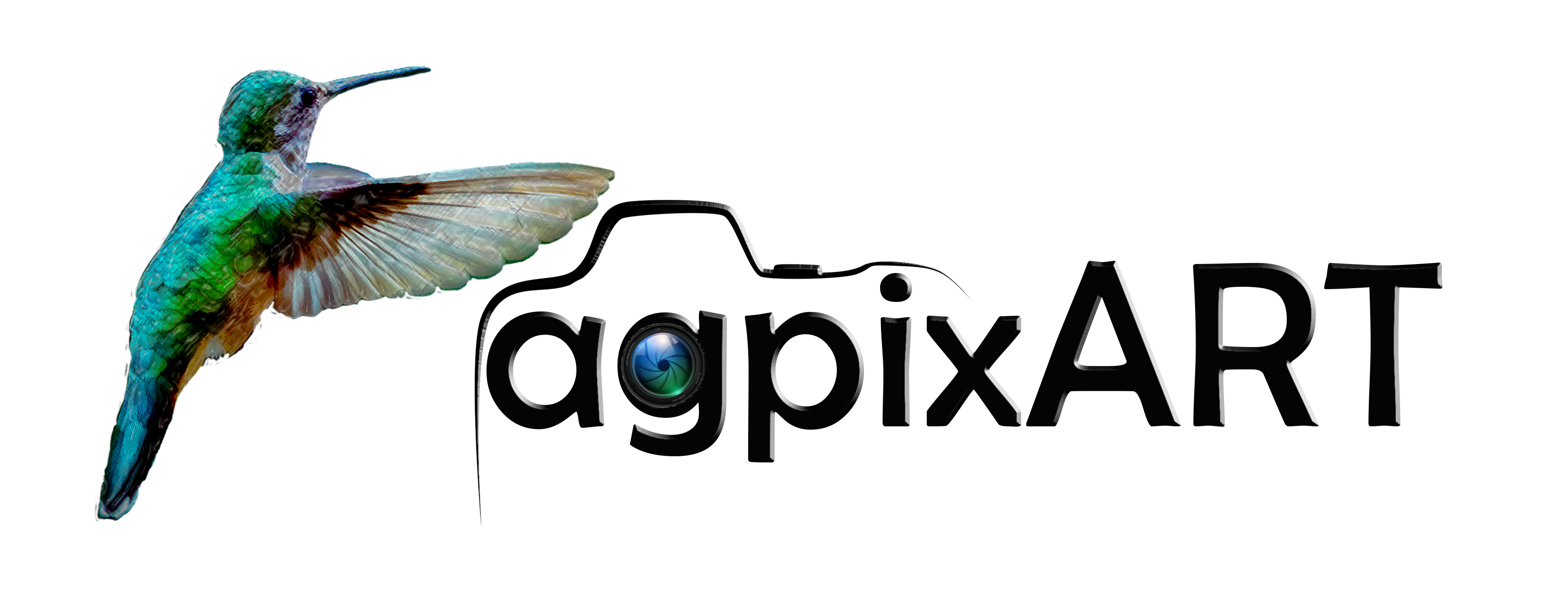Rábida Island
Rábida Island a small, volcanic island located south of Santiago Island in the central part of Galápagos Archipelago.
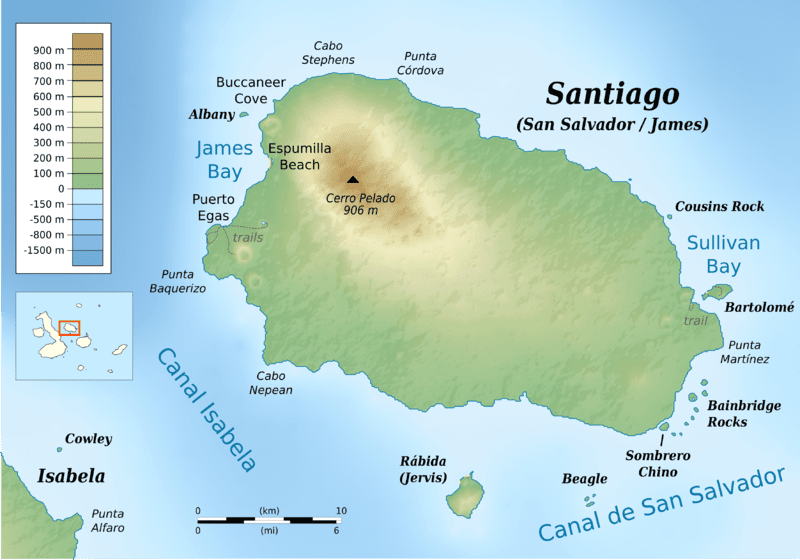
Rábida Island
Jervis Island
Rábida Island covers roughly 4.9 km² (1.9 sq mi) with a maximum altitude of 367 meters (1,203 ft). Known for its striking red sand beaches and cliffs, the island’s vivid color comes from iron-rich volcanic lava and eroded sand.
Rábida is one of the most volcanically diverse islands in the Galápagos, featuring basalt, ferrobasalt, icelandite, and trachyte from fractional crystallization. Its landscape includes steep slopes, small volcanic craters, and lava formations, with the red hue caused by oxidized iron in the lava.
Good To Know…
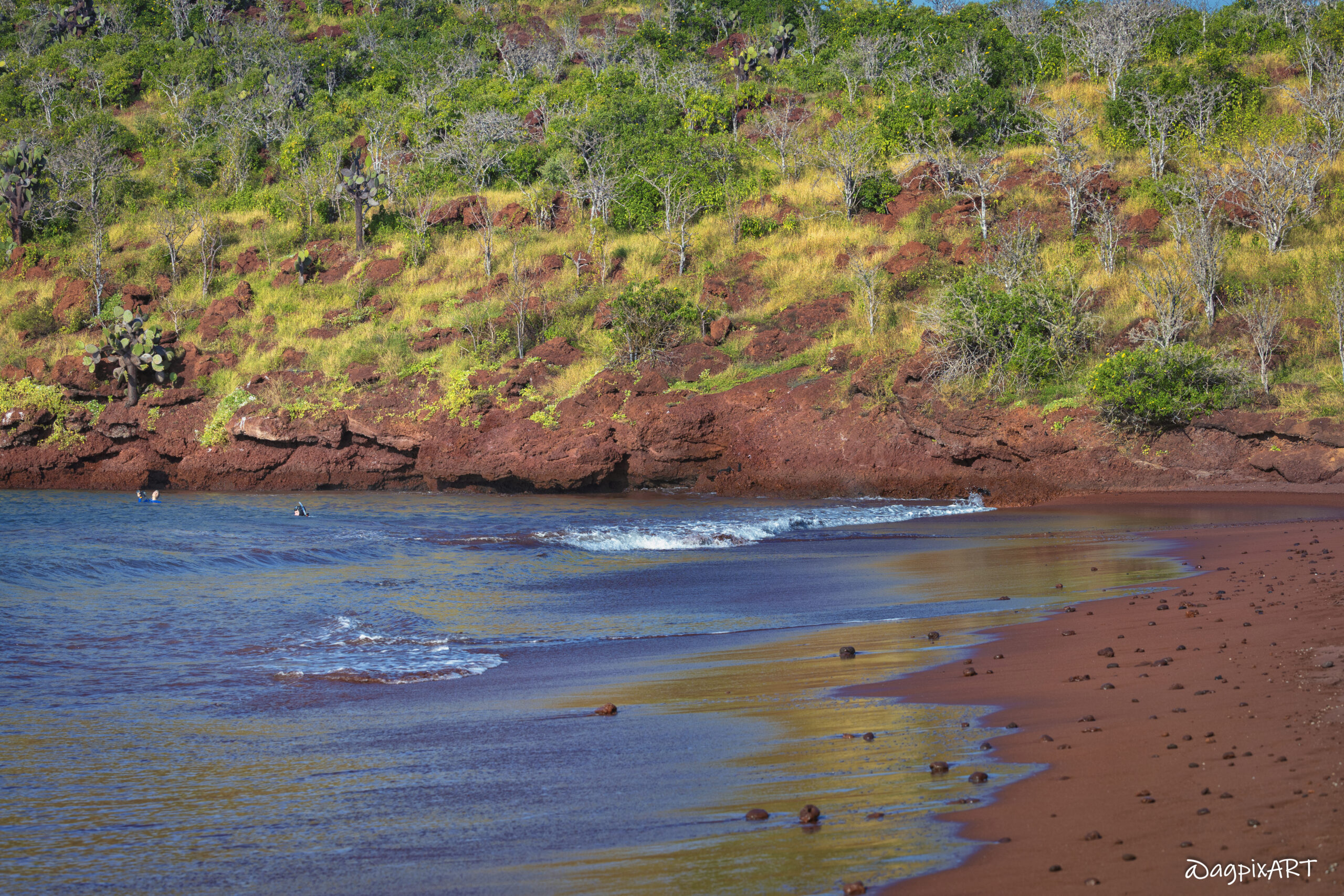
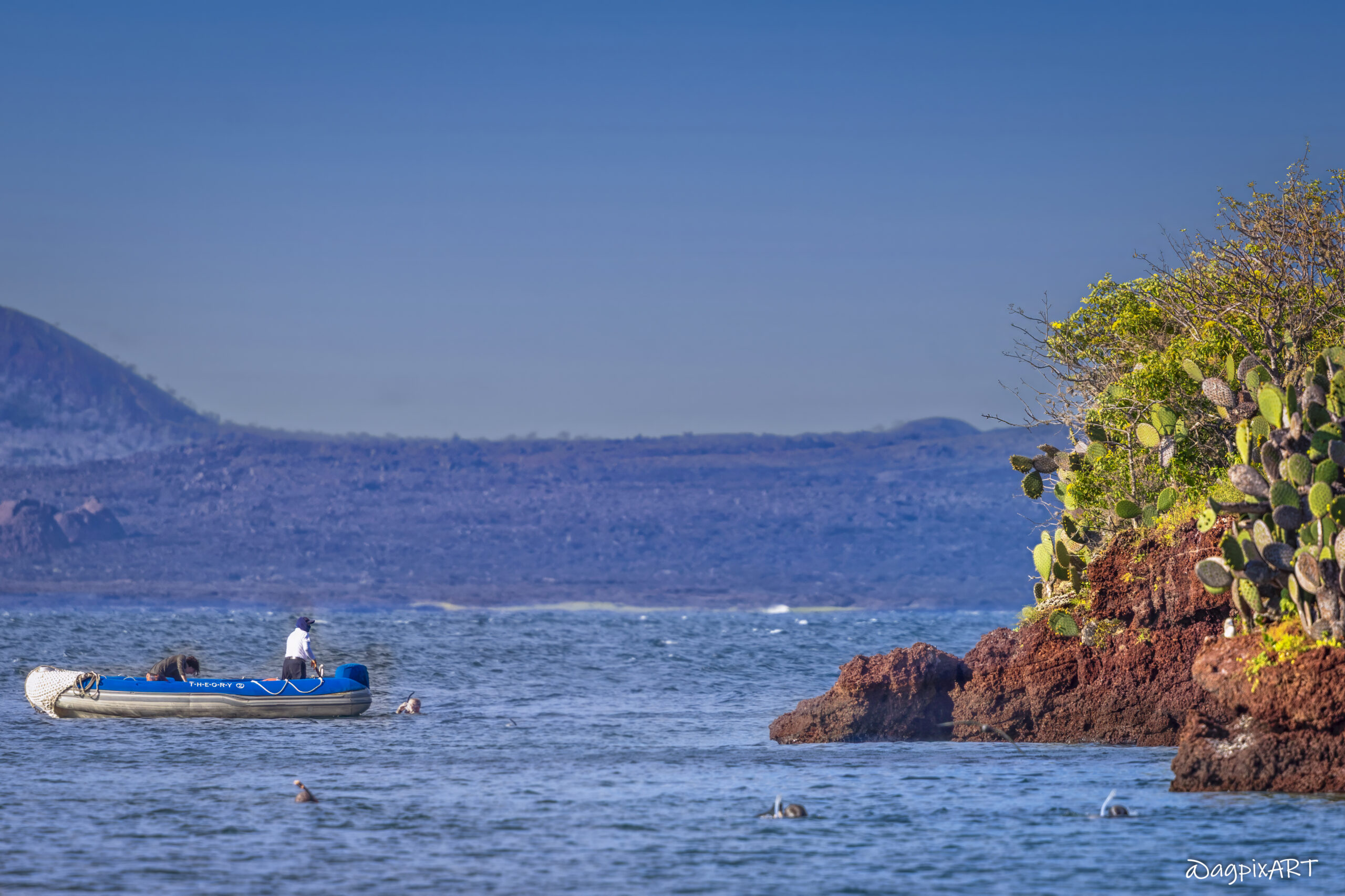
What-to-See
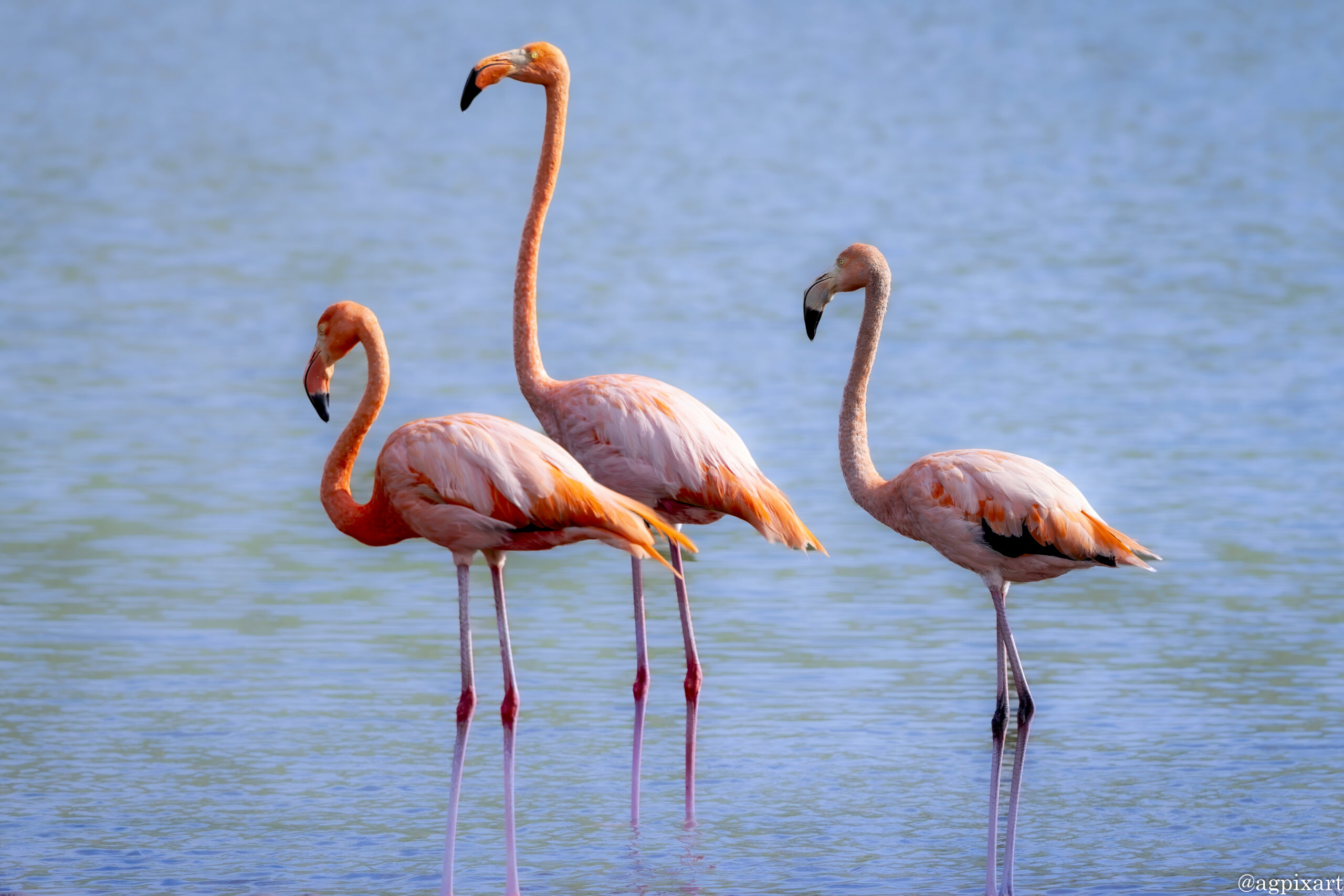
American Flamingos
American flamingos (Phoenicopterus ruber) returned to Rábida in 2022 after a 20-year absence, following the successful eradication of habitat disrupting rats in 2011. Their presence is seasonal and sporadic, with sightings more likely during the warmer season (Dec.–May) when the lagoon’s conditions support their feeding, though numbers are typically low (a few to a dozen at most). They feed in the shallow, brackish lagoon behind the beach, filtering shrimp and algae, which contribute to their pink coloration. They are studied as part of broader Galápagos biodiversity research. Their movements help scientists understand lagoon health and inter-island connectivity.
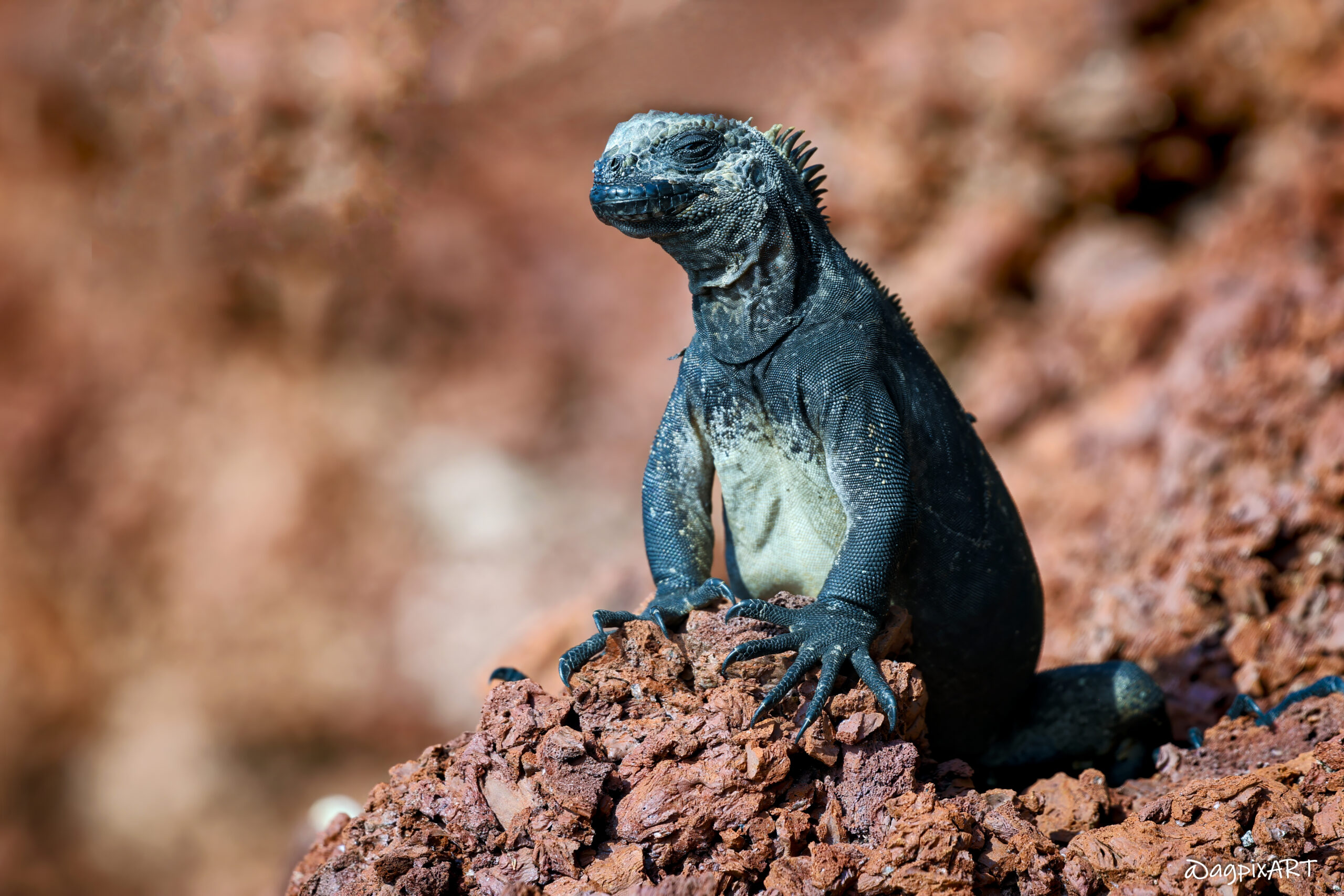
Marine Iguana
Marine iguanas (Amblyrhynchus cristatus) like to lounge on the rocky coastlines of Rabida. They are nicknamed Galápagos Dragons for their prehistoric look and spiky crests and they are the world’s only seafaring lizards with clawed feet and a laterally flattened tail that aids swimming. Salt glands expel excess salt via sneezes, creating white “wigs” on their heads. They need to thermoregulate—basking on sun-warmed volcanic rocks to raise their body temperature after foraging in the cold ocean waters for algae, their primary food source.
Rabida, provides an ideal habitat, as the dark red lava rocks absorb heat, and the surrounding waters are rich in marine algae.

Lava Lizard
Tiny endemic lizards (Microlophus species) are a highlight of the site’s volcanic landscape, perfectly adapted to its rugged lava fields. They are small, 15–25 cm long (including tail), with males larger and more colorful than females. Males have mottled gray, brown, or black skin with yellow or reddish throat patches. Females are duller, often with a red or orange throat during breeding. They’re territorial, with males defending prime spots via head-bobbing and push-up displays. They are insectivores, feeding on ants, beetles, and spiders, often seen darting to snatch prey near tidal pools. They occasionally eat plant matter. They’re bold, coexisting with marine iguanas and sea lions.
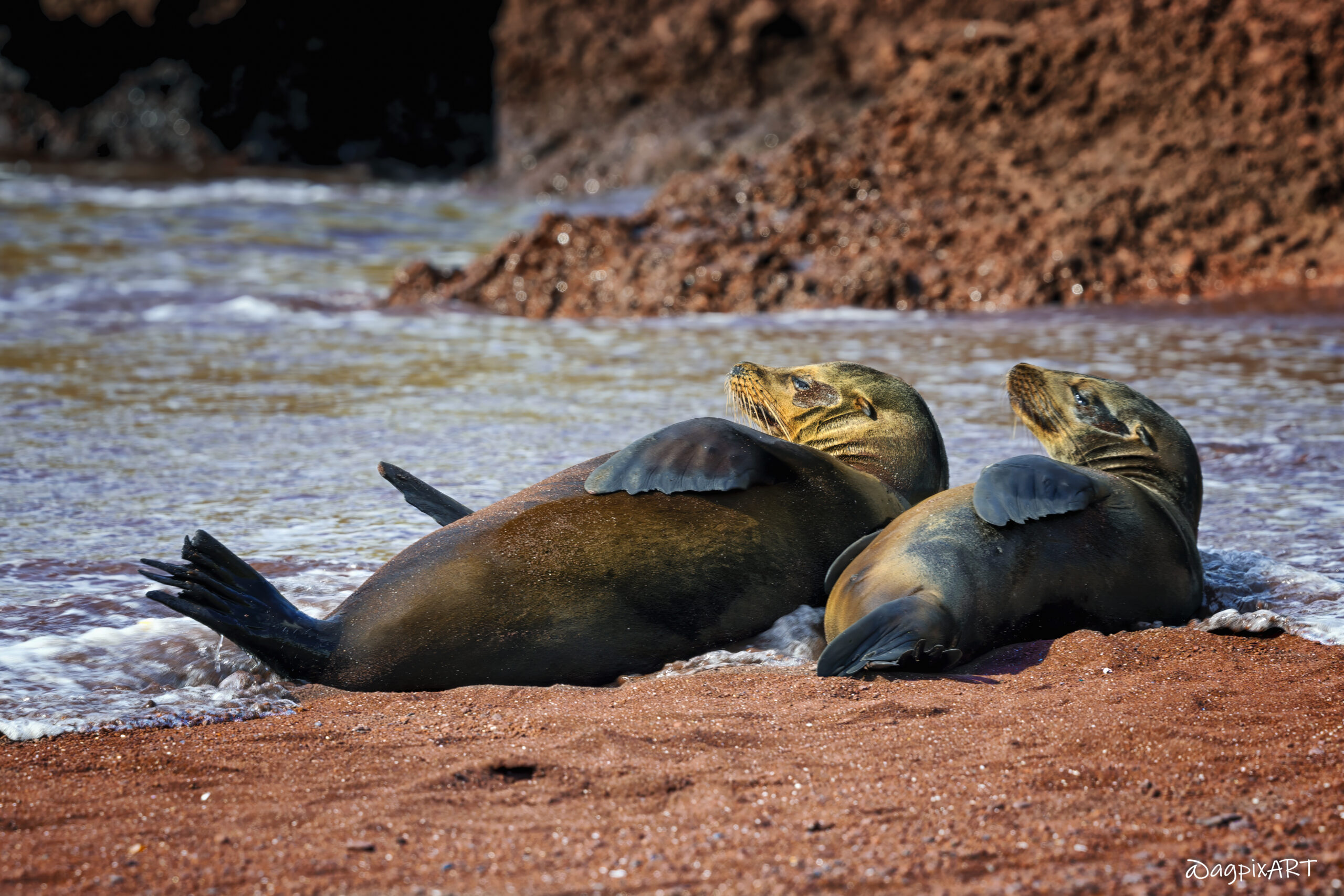
Galápagos Sea Lions
Sea Lions (Zalophus wollebaeki), are called sea puppies for their dog-like barks and puppyish antics in the water. Males grow up to 2.3 m long and 200–400 kg, with a muscular build. Females are smaller, reaching 1.8 m and 60–120 kg. Pups weigh 6–8 kg at birth. Sleek, chocolate-brown coats shimmer when wet, fading to a lighter tan when dry. Streamlined bodies, strong flippers, and external ear flaps make them agile swimmers. They are highly social, forming colonies with loose hierarchies. Pups are darker with big, expressive eyes. Mothers leave pups for hours (sometimes 1–2 days) to hunt fish and squid offshore.
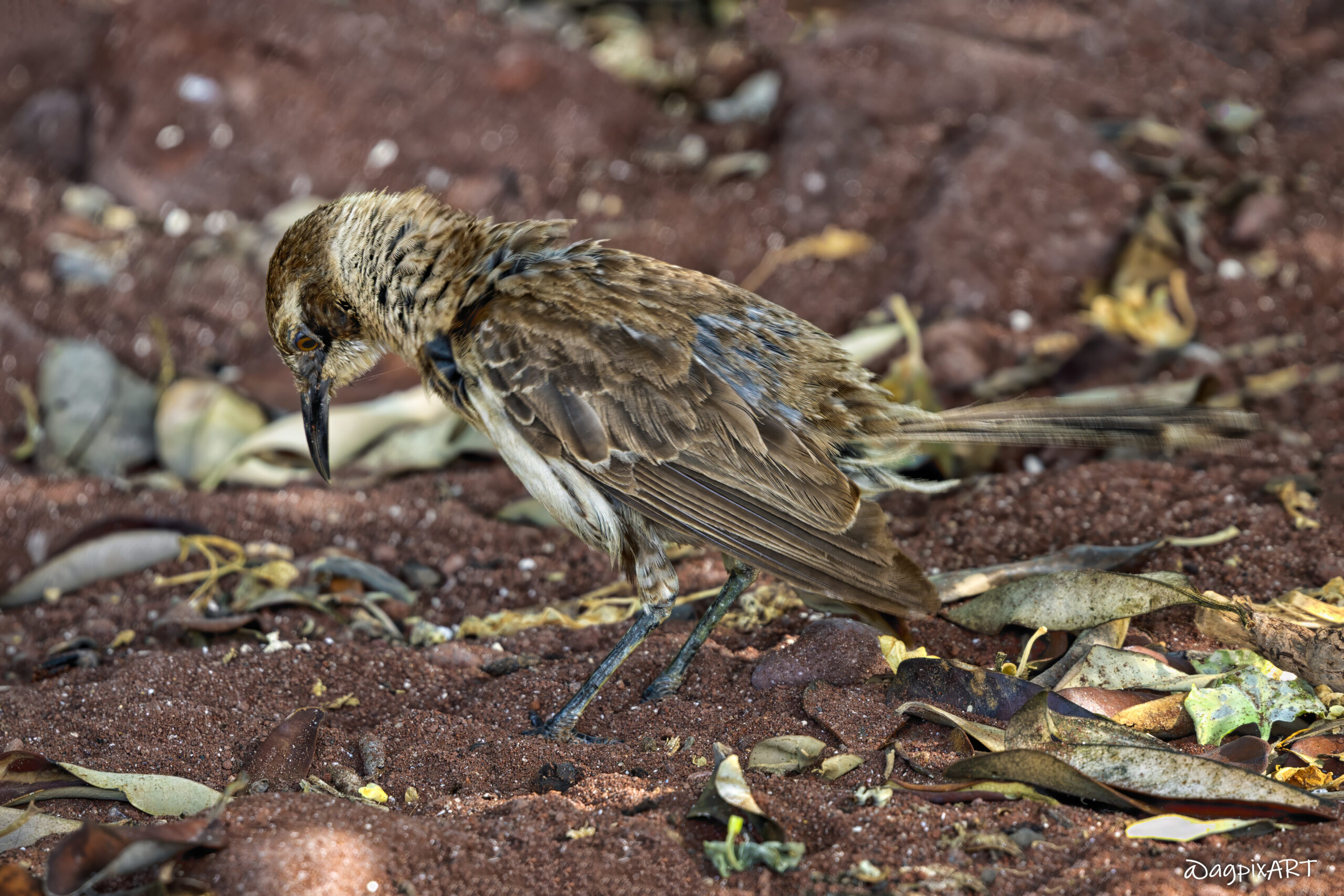
Galápagos Mockingbird
The Galápagos Mockingbird (Mimus bauri) is one of four endemic mockingbird species inhabiting the islands. It is a small, grayish-brown bird known for its complex vocalizations, often mimicking other species. Their strong wings allow agile maneuvers to chase insects or evade predators like short-eared owls. Unlike most birds, mockingbirds often live in cooperative family groups where younger siblings help raise new chicks, a rare social behavior that boosts survival in the harsh environment.
They build simple twig nests in cacti or low shrubs, often reusing them across seasons, and both parents share incubation duties for about 12–14 days.
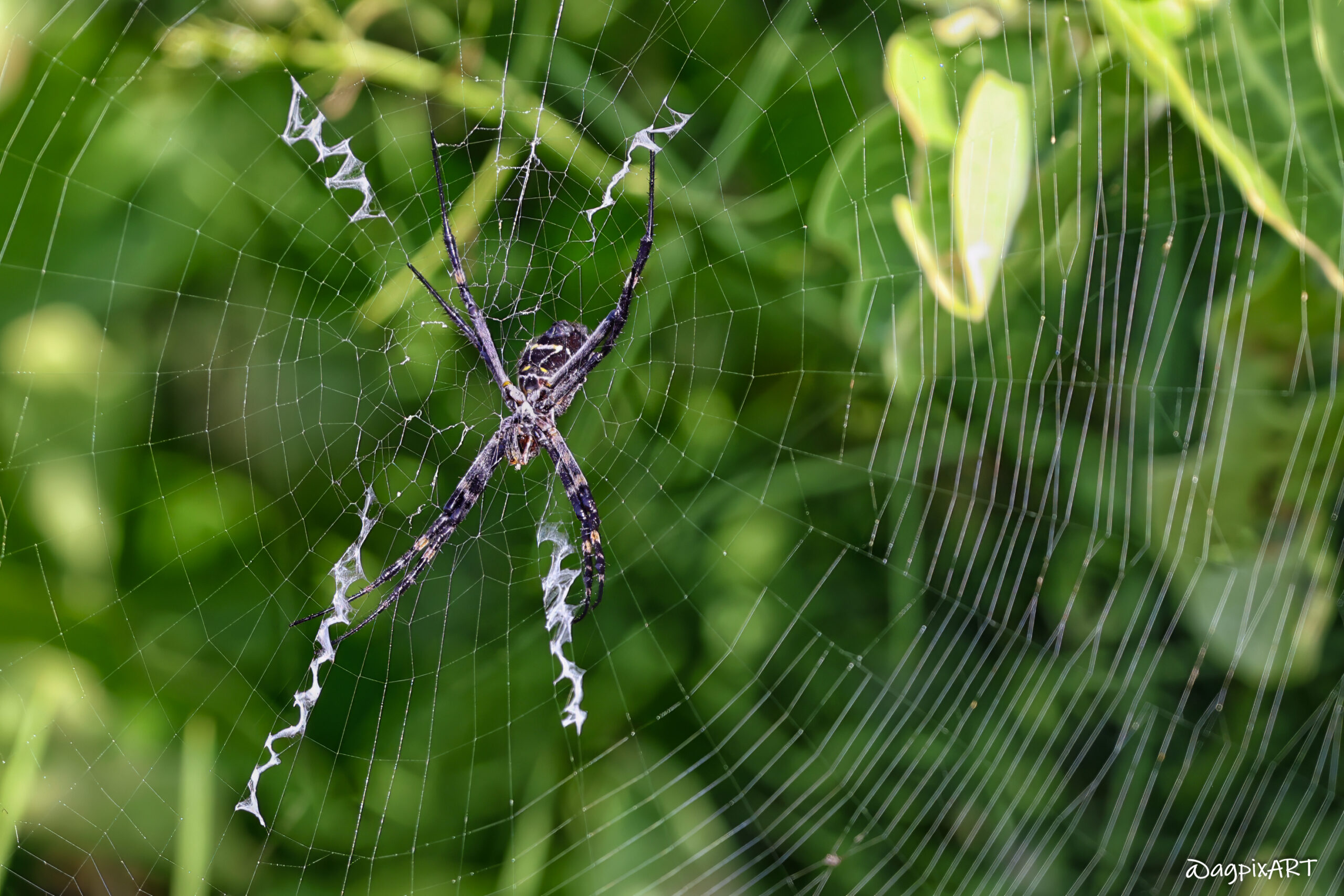
Zig-zag Spider
The Neoscona cooksoni spider is an orb-weaver spider in the Araneidae family and a species endemic to the archipelago.
It has legs that are typically reddish-brown to black with yellow or orange bands or markings. The legs often appear striped or mottled, with the brighter yellow or orange bands contrasting against the darker base color, especially near the joints. This coloration complements the spider’s black-and-yellow abdomen. Females are 9–18 mm in body length, with males smaller at 6–13 mm. Their legs add significant length, making them appear larger in their webs.
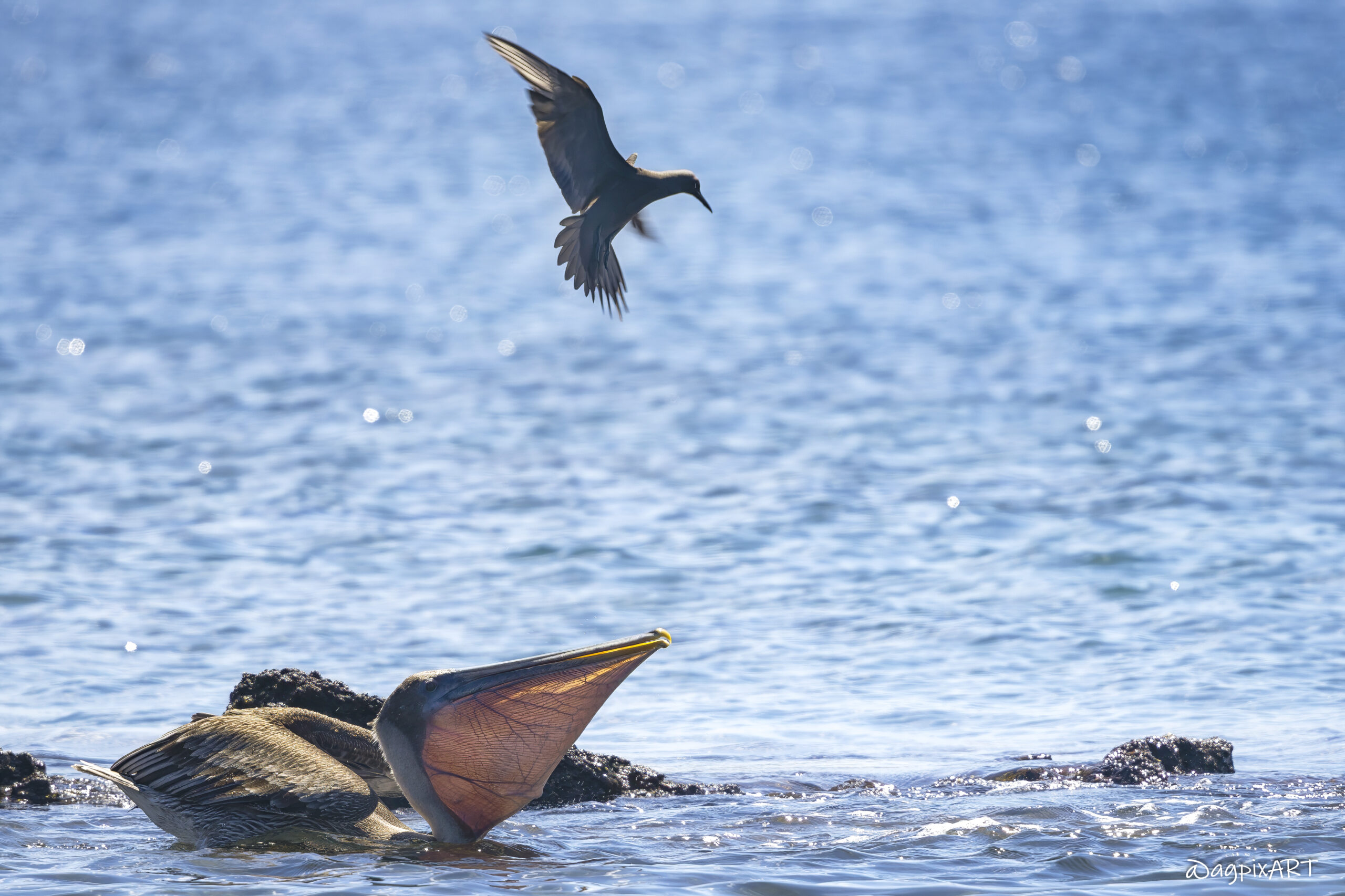
Galápagos Brown Pelican
Brown pelicans (Pelecanus occidentalis urinator) are famous for their dramatic plunge-dives, diving from up to 60 feet (18 meters) into the waters to scoop up fish.
Their stretchy throat pouch can hold up to 3 gallons (11 L) of water and fish. They feed on small fish like sardines.
During mating season (peaking in warmer months), males develop vibrant reddish or yellowish hues on their pouches.
The brown pelicans are a unique Galápagos subspecies, slightly larger than mainland cousins, adapted to the island’s rich marine environment.
Instructions for photo proofing and comments:
Left-click on the photo to access options for title information (i), leave comment, or mark the photo(s) as the favorite. The option to submit the selected as favorite photos is under “Submit proofs” button under photo gallery.
